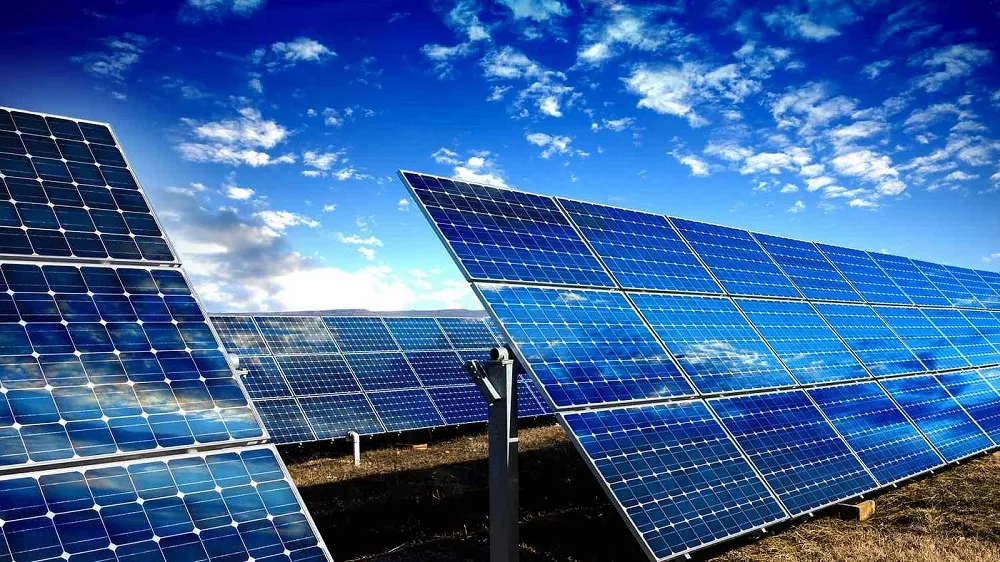The integration of solar panels into our built environment has become a symbol of our commitment to harnessing clean and renewable energy. However, to maximize the benefits of solar power, it’s essential to consider all aspects of energy efficiency, including the landscaping surrounding your solar panel installation. Energy-efficient landscaping complements solar panels by providing shade, reducing cooling costs, and enhancing the overall environmental impact. In this article, we will explore the comprehensive approach of combining solar panels with energy-efficient landscaping, highlighting its benefits and providing practical tips for homeowners and businesses.
The Solar Panel-Landscaping Connection
Solar panels are designed to capture sunlight and convert it into electricity, making them most effective when exposed to direct sunlight. However, extreme heat and sun exposure can also reduce their efficiency and longevity. This is where energy-efficient landscaping comes into play. By strategically planting trees, shrubs, and other vegetation, you can create a harmonious balance between solar power generation and environmental sustainability.
Benefits of Energy-Efficient Landscaping for Solar Panels
- Shade and Cooling: Trees and shrubs provide natural shade to solar panels during the hottest parts of the day, reducing the risk of overheating and increasing their efficiency.
- Energy Savings: Well-planned landscaping can reduce cooling costs for buildings by providing natural shade and improving overall thermal comfort.
- Aesthetic Appeal: Thoughtfully designed landscaping enhances the visual appeal of your property while showcasing your commitment to sustainability.
- Environmental Benefits: Plants absorb carbon dioxide, release oxygen, and provide habitat for wildlife, contributing to a healthier and more biodiverse environment.
- Increased Property Value: A well-landscaped property with solar panels can increase its market value and appeal to potential buyers or tenants.
Strategies for Energy-Efficient Landscaping with Solar Panels
- Location, Location, Location: Assess your property to determine the best location for solar panel installation. Identify areas where shade from landscaping can be strategically utilized to enhance energy efficiency.
- Selecting the Right Trees and Shrubs: Choose native or drought-tolerant plants that require minimal water and maintenance. Opt for deciduous trees that provide shade in the summer while allowing sunlight through in the winter.
- Planting Distance: Determine the appropriate distance between solar panels and landscaping features to prevent shading during peak sunlight hours. Consult with a landscape professional for guidance.
- Multi-Functional Landscaping: Consider landscaping elements that serve multiple purposes, such as shade structures or pergolas with climbing plants. These additions can provide both shade and aesthetic appeal.
- Optimize Plant Placement: Strategically place trees and shrubs to shade not only the solar panels but also windows and walls of your home or building, reducing cooling costs further.
- Use Reflective Materials: Choose light-colored or reflective materials for hardscape surfaces like pathways and driveways to minimize heat absorption and maintain a cooler environment.
- Rainwater Harvesting: Implement rainwater harvesting systems to irrigate your landscaping, reducing water consumption and costs.
- Soil Quality: Ensure that your soil is healthy and well-aerated to promote plant growth and reduce water needs.
- Regular Maintenance: Regularly maintain your landscaping to keep it thriving and efficient. Prune trees and shrubs to prevent shading over the solar panels.
Case Study: Solar Panels and Sustainable Landscaping
To illustrate the benefits of combining solar panels with energy-efficient landscaping, consider the following case study:
Residential Property in Southern California:
A homeowner in Southern California installed a rooftop solar panel system to reduce their electricity bills and minimize their carbon footprint. To maximize the efficiency of the solar panels and enhance the overall energy performance of their property, they adopted the following strategies:
- Solar Panel Location: The homeowner carefully selected the location for solar panel installation, opting for a south-facing roof with ample sunlight exposure throughout the day.
- Plant Selection: Native drought-tolerant plants were chosen for landscaping, including succulents, California poppies, and native grasses. These plants require minimal water and maintenance.
- Shade Trees: Deciduous trees, such as oak and sycamore, were planted strategically to provide shade to the solar panels during the hottest parts of the day, reducing the risk of overheating and increasing efficiency.
- Integrated Design: The homeowner designed their landscaping to serve multiple purposes. A pergola covered with climbing vines not only provides additional shading for the home but also enhances the visual appeal of the outdoor space.
- Rainwater Harvesting: A rainwater harvesting system was installed to capture and store rainwater for irrigation, reducing water consumption and costs.
The results of this comprehensive approach were striking:
- The solar panels consistently operated at peak efficiency due to strategic shading.
- Cooling costs for the home were reduced, thanks to the combined benefits of shade and energy-efficient landscaping.
- The property’s visual appeal was enhanced, creating a welcoming and environmentally conscious atmosphere.
- Native plants thrived, requiring minimal water and maintenance.
- Rainwater harvesting reduced reliance on municipal water sources for irrigation.
Conclusion
The integration of solar panels and energy-efficient landscaping represents a holistic approach to sustainable living. By strategically planting shade-providing trees and shrubs and selecting the right plant species, homeowners and businesses can optimize their solar panel installations for maximum energy efficiency and reduce cooling costs. This comprehensive approach not only enhances energy savings but also promotes a more environmentally friendly and visually appealing living or working environment.
As the importance of sustainable living and renewable energy continues to grow, combining solar panels with energy-efficient landscaping serves as a powerful example of how we can harness the power of the sun while respecting and enhancing our natural surroundings. It’s a testament to the fact that responsible energy generation can go hand in hand with creating beautiful and eco-friendly spaces for generations to come.




